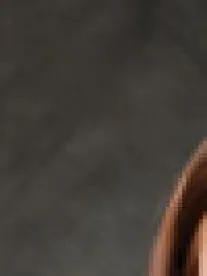In a case involving a patent directed to a method of preparing liver cells, the U.S. Court of Appeals for the Federal Circuit, in an appeal from a district court grant of preliminary injunction, concluded that the patent owner had established a likelihood of success on the merits over the defendants’ obviousness and non-infringement defenses.The Court also affirmed the district court’s grant of a preliminary injunction.Celsis In Vitro, Inc. v. Cellzdirect, Inc. and Invitrogen Corp. Case Nos. 10-1547; -4053 (Fed. Cir., Jan. 9, 2012) (Rader, C. J.) (Gajarsa, J. dissenting).
The technology at issue concerns methods for preparing multi-cryopreserved liver cells.In particular, one of the steps in the claimed method requires a “second thaw…‘without requiring’ a density gradient step.”Defendants Cellzdirect and Invitrogen (now Life Technologies Corp., or LTC) read the “without requiring” language to mean “prohibiting” a density gradient step and thus argued that its process did not infringe because it included the prohibited step.The district court characterized this argument as “hokum” and issued a preliminary injunction.The district court also found that Celsis was likely to prevail on the issue of non-obviousness, noting that while there were a “vast” number of publications in the prior art discussing cryopreservation and liver cells, no publications disclosed the claimed multi-cryopreservation of liver cells.After the district court granted Celsis’ motion for a preliminary injunction, LTC appealed.
On appeal, the Federal Circuit upheld the district court’s finding of likelihood of success with respect to infringement and validity. On the obviousness issue, the Federal Circuit noted the unpredictability in this particular field and also explained that the prior art taught against multi-cryopreservation of liver cells.The Court further stated that LTC’s “vague references to ‘market need’” in the absence of additional facts, and properly linked to the claimed invention, is actually evidence of long-felt need and thus probative of non-obviousness.The Court agreed with the district court that because none of LTC’s experts actually predicted the results of the claimed method at the time of the invention and there was no teaching in the prior art predicting those results, that a person of ordinary skill in the art would not have found the invention to have been obvious.
In dissent, Judge Gajarsa argued that the district court erroneously required LTC to prove invalidity by clear and convincing evidence at the preliminary injunction stage.Judge Gajarsa asserted that in order to defeat a preliminary injunction, LTC needed only to show that the asserted patent was “vulnerable” to challenge, not invalid under a clear and convincing evidence standard.
Judge Gajarsa also contended that in affirming the district court’s decision, the majority “reinvigorates the pre-KSR standard for obviousness, rigidly requiring an explicit teaching, suggestion, or motivation.”Judge Gajarsa explained that while obviousness does not require each claimed element to be present in the prior art, in this case, each claimed element was taught in the prior art.Judge Gajarsa characterized the claimed invention as using “two known techniques” and repeating them.He concluded that “[r]epeating known steps to obtain a desired result is not inventive.”Thus, in Judge Gajarsa’s view, the district court abused its discretion in granting a preliminary injunction because the claimed invention was vulnerable to an obviousness defense in view of the prior art teachings.




 />i
/>i
